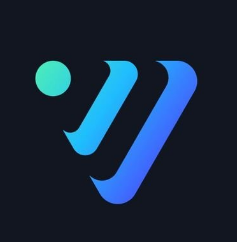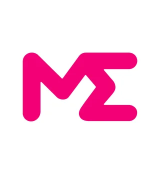
Ola Project Introduction
Ola is an infrastructure based on Zero Knowledge (ZK) technology, designed to enhance the privacy and scalability of the Ethereum blockchain. It provides developers and users with a powerful toolset to create and use decentralized applications (dApps) while ensuring data privacy.
The advantage of Ola lies in the seamless integration of its core components. The Zero Knowledge Virtual Machine (ZKVM) provides the foundational privacy protection for applications on the network.
The Ola-Lang and Ola-Compiler components offer developers tools to create privacy-preserving smart contracts. Several performance optimization features work together to ensure efficient contract execution and good scalability.
These components collectively form a high-performance, privacy-focused Layer 2 solution aimed at addressing privacy challenges currently faced by blockchain platforms. Ola enables developers to build privacy-oriented applications, unlocking new use cases with both transparency and confidentiality.
Ola Project Background
The Ola project was created, incubated, and developed by Sin7y Labs. Initially launched in 2022 under the name OlaVM, it was later renamed to Ola. Sin7y Labs was founded in 2021, focusing on research in ZK cryptography and ZK algorithms.
The research team comprises over ten cryptography researchers from top universities, having published more than fifty research papers in both Chinese and English.
On July 3, 2023, Ola raised $3 million in a seed round led by Web3.com Ventures and Foresight Ventures. Token Metrics Ventures, J17 Capital, Skyland Ventures, LD Capital, CatcherVC, and other well-known investors also participated in this funding round.
In March 2023, Ola launched its community loyalty program, OVP (OlaVM Points), designed to incentivize and reward active community participants. The program aims to build an integrated high-performance, privacy-enabled, and programmable hybrid Layer 2 infrastructure (ZK-ZKVM).
Core Components: Proof of Work (PoW), Zero Knowledge Virtual Machine (ZKVM), Ola-Lang, Ola-Compiler, etc.
Proof of Work (PoW) Consensus Mechanism
The Ola project adopts the PoW consensus mechanism to ensure fairness in participation. PoW is a consensus algorithm where miners compete to solve complex mathematical puzzles, and the first miner to find the correct answer gains the right to add a new block to the blockchain.
Similar to other PoW projects, miners in the Ola ecosystem solve ZK computation problems with computational power. This design is an innovative decentralized approach, ensuring that no single user or entity controls the network.
It also provides a dynamic security mechanism, where successfully attacking the network requires controlling over 50% of the network, making such an attack prohibitively expensive and nearly impossible.
Zero Knowledge Virtual Machine (ZKVM)
The Zero Knowledge Virtual Machine (ZKVM) uses advanced mathematical proofs to bundle multiple transactions into a single proof, significantly reducing the computational demands on the blockchain and enhancing the privacy protection provided by Zero Knowledge.
A major advantage of ZKVM is that it solves privacy issues present in traditional virtual machines. This technology allows users to conduct transactions on the public Ethereum blockchain while ensuring the security and privacy of their sensitive information.
As a core component of the Ola project, ZKVM enables developers to build privacy-preserving applications and smart contracts. ZKVM supports parallel processing of multiple proofs, reducing latency and increasing the platform’s processing capacity, resulting in faster transaction speeds and a better user experience.
Ola Language (Ola-Lang)
Ola Language is a Turing-complete high-level programming language that allows developers to write OlaVM smart contracts, with computational accuracy verified by the OlaVM backend.
The language is not only developer-friendly but also ZK-friendly. Its syntax is similar to popular programming languages such as Rust and Solidity, making it easy to learn and use.
Most existing programming languages struggle to execute with Zero Knowledge proof systems. Ola Language, however, is optimized for ZK, supported by both the Ola compiler and OlaVM.
Ola Compiler
The Ola Compiler is responsible for compiling high-level Ola-Lang code into executable assembly code for the OlaVM. The compiler is divided into front-end and back-end components.
The front-end receives high-level contract programs and compiles them into LLVM intermediate representations (IR). LLVM is a compiler toolkit that allows the front-end to pass instructions to the back-end.
The back-end of the Ola project receives the LLVM generated by the front-end and converts it into assembly code for OlaVM.
Simplified Instruction Set
Ola reduces computational overhead during contract execution by simplifying its instruction set, improving performance. A streamlined instruction set makes transaction processing faster and more efficient in utilizing computational resources.
By simplifying the instruction set, Ola achieves simplified contract execution, reduced computational requirements, faster transaction processing, and enhanced platform scalability.
Hardware Acceleration
To further improve efficiency, Ola explores hardware-based optimizations. Ola can leverage GPUs and other specialized hardware to accelerate cryptographic operations, speeding up proof creation and verification.
This hardware acceleration is particularly useful for handling the computationally intensive tasks required for privacy proofs.
Highlights of the Ola Ecosystem: OlaVM and OlaOS
OlaVM
OlaVM is the virtual machine on the Ola network responsible for executing smart contracts. As a high-performance Layer 2 infrastructure based on ZKVM technology, OlaVM offers programmable privacy protection and scalability.
The testnet for OlaVM is expected to handle up to 2,500 transactions per second (TPS).
This virtual machine is developer-friendly, using a smart contract language similar to Solidity and optimized specifically for ZKVM, simplifying the deployment and operation of applications, enabling developers to easily create privacy-focused smart contracts.
Developers can deploy DeFi protocols, NFT marketplaces, or social applications that efficiently handle large-scale transactions.
OlaOS
OlaOS is similar to an operating system for the Ola network, supporting interactions between developers, users, and the blockchain.
OlaOS processes transactions through a JSON-RPC interface and stores them in the infrastructure’s database. These transactions are then directed to the memory pool for further processing.
OlaVM further processes the transactions, bundles them into blocks, and writes them to the blockchain. To ensure blockchain security, OlaOS strictly validates each new block before adding it to the blockchain, ensuring consistency and security across all network nodes.
What is the Ola Token?
The Ola token is the native token of the Ola project, used for staking, governance, and paying transaction fees. The project is currently in the testnet phase, with the native token expected to be launched according to the plan.
Notably, on August 1, 2024, the Ola team announced via Twitter (now X) that the token distribution snapshot for the second season of the Mobile Zero Knowledge Proof (ZKP) verification network, Massive, would occur at 8:00 PM on August 8. Points earned during the second season will serve as the basis for determining eligibility and the quantity of Ola token distribution.
Risk Analysis
Advantages
Ola allows developers to selectively implement privacy features in their applications, providing flexible solutions for data protection. This is especially beneficial for applications that need to balance transparency and user privacy.
Ola’s ZK-ZKVM architecture ensures high throughput and low latency, making it ideal for large-scale applications. Ola’s programming language, Ola-Lang, is easy to learn, particularly for developers familiar with Solidity and Rust, helping to attract a larger developer community and drive innovation.
Disadvantages
While programmability is an advantage, it could increase development difficulty for those unfamiliar with Zero Knowledge technology.
Challenges
As a privacy-first platform, Ola must navigate the evolving landscape of data privacy and cryptocurrency regulations. It must also ensure robust security measures to protect user data and maintain user trust in the platform.
Competitive Analysis
Ola and zkSync are both Layer 2 solutions designed to enhance blockchain application scalability and privacy.
Ola focuses on its high-performance ZK-ZKVM architecture, enabling fast transaction processing, while zkSync is a mature Zero Knowledge aggregation technology widely used within the Ethereum ecosystem, aiming to provide seamless integration and good user experience for existing Ethereum applications.
The Ola project adopts a hybrid ZK-Rollup architecture, emphasizing programmability, while zkSync prioritizes security and user experience with a validated Zero Knowledge aggregation technology.
How to Obtain Ola Tokens?
Once the tokens are launched, users can purchase Ola tokens on exchanges like Gate.io and participate in the Ola ecosystem. To do this, users need to set up a wallet and use the token.
Setting up a Wallet
When the Ola token is launched, users can purchase it through exchanges. Users need to create a Gate.io account, complete identity verification, and deposit funds to buy the tokens.
Using Ola Tokens
Once users acquire Ola tokens, they can delve deeper into the Ola ecosystem and participate in various decentralized finance (DeFi) activities.
Relevant Navigation


Mask Browser

GAEA

Tonkeeper

Venus Protocol

Magic Eden

Alliance Games

